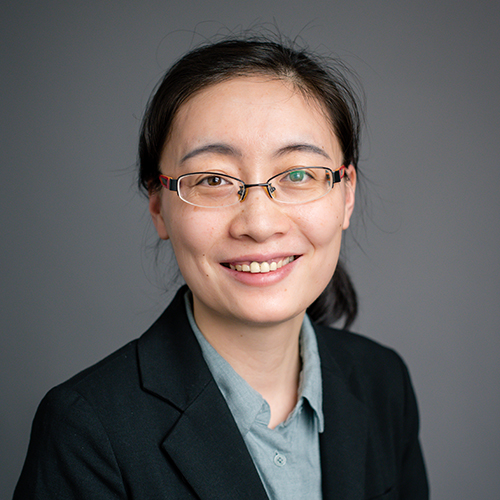![]()
 Yang Zhou, Ph.D.Yang Zhou, Ph.D., assistant professor in the Department of Biomedical Engineering, is the latest winner of the Heersink School of Medicine’s Featured Discovery. This initiative celebrates important research from Heersink faculty members.
Yang Zhou, Ph.D.Yang Zhou, Ph.D., assistant professor in the Department of Biomedical Engineering, is the latest winner of the Heersink School of Medicine’s Featured Discovery. This initiative celebrates important research from Heersink faculty members.
Zhou’s study, "TBX20 improves contractility and mitochondrial function during direct human cardiac reprogramming," was recently published in Circulation.
The most common cause of death worldwide is heart failure from ischemic heart disease, which is caused by narrowed heart arteries. Zhou and her team have been working to find ways to make new heart muscle cells that can be used to repair damaged hearts.
“One way we've been doing this is by turning normal heart cells, called fibroblasts, into heart muscle cells, called cardiomyocytes,” said Zhou. “However, this process is not very efficient and doesn't always produce functional, mature cardiomyocytes.”
In this study, the team found a factor called TBX20 that can help make this process more efficient and produce better-quality cardiomyocytes.
Read more from UAB News about the team’s work.
The Heersink School of Medicine communications staff sat down with Dr. Yang Zhou to gain insight about this study, UAB, and the science community.
Q: What compelled you to pursue this research?
My research focuses on understanding the mechanisms that control how cells are given rise to different types. This is important for developing new therapies for human diseases like heart failure. In my previous work, I generated heart muscle-like cells from mouse and human non-muscle cells via direct cardiac reprogramming. This process works well in mice but not as well in humans, which significantly hurdles the clinical translation of this approach. To overcome this issue, we attempted to find the missed factors required for human cardiac reprogramming and maturation. My research aims to understand how to make mature heart muscle cells in humans and provide a basis for a new treatment for heart failure.
Q: What was your most unexpected finding?
One unexpected discovery we made was that TBX20 specifically targets the genes that control contractility in heart muscle cells. The activation of these genes is important for how well the reprogrammed cells can work. In addition, we were also surprised to find that TBX20 enhances mitochondrial function, although we haven’t had a clear mechanism of action.
Q: How do you feel your research will impact the science community?
Our findings have a major impact on the understanding and clinical implementation of direct reprogramming cardiomyocytes from human fibroblasts. The newly identified reprogramming cocktail will facilitate the development of reprogramming as a potential therapy for the treatment of heart failure. Meanwhile, we revealed the in-depth mechanisms to understand how TBX20 functions, which advances our understanding of the molecular mechanisms underlying cardiac fate conversion.
Q: When did you know you had an important discovery?
When we found that TBX20 significantly activated contractility, sarcomere, and ion channel genes, which are the genetic basis for cardiomyocyte function and maturation. Later, the functional assessment of electrophysiological and metabolic analyses further suggested the therapeutic potential for TBX20.
Q: How has being at UAB and living in Birmingham affected your research?
This study would not have been possible without the efforts of our graduate students and collaborators across UAB. Two excellent doctoral students, Yawen Tang (BME) and Sajesan Aryal (GBS), made important contributions to the paper and showed their dedication and potential. My long-term collaborator, Dr. Rui Lu from the Department of Medicine, provided tremendous help with next-generation data generation and analyses. Additionally, Drs. Vladimir Fast and Jay Zhang from the Department of Biomedical Engineering helped us assess the function of the reprogrammed cells. It was a pleasure to work with all of them on this project.
Q: What do you find makes the science community here unique?
I am grateful for the supportive and collegial environment provided at UAB, which allows junior faculty like me to easily find the expertise and collaborations I need for my research. The strong research infrastructure at UAB also enables us to utilize cutting-edge techniques to address important scientific questions. I truly believe that UAB is a great place for researchers and scientists at all levels to grow and achieve their career goals.